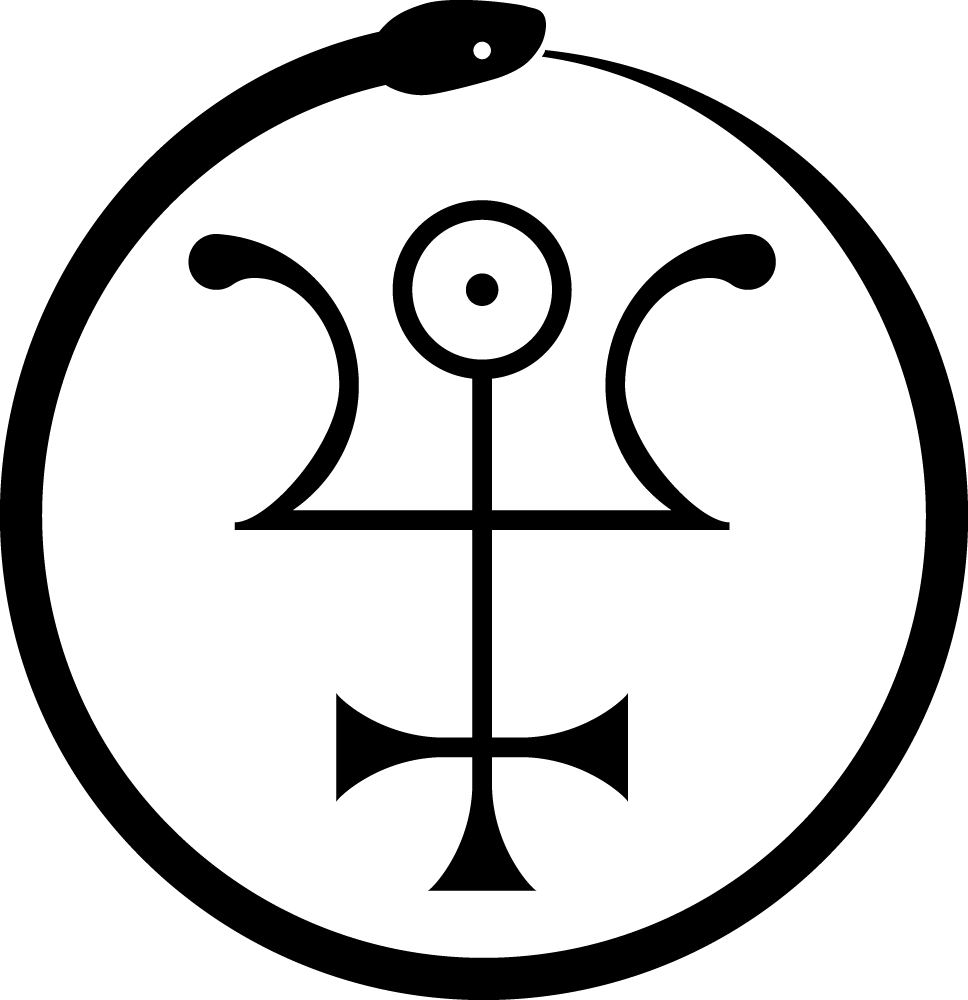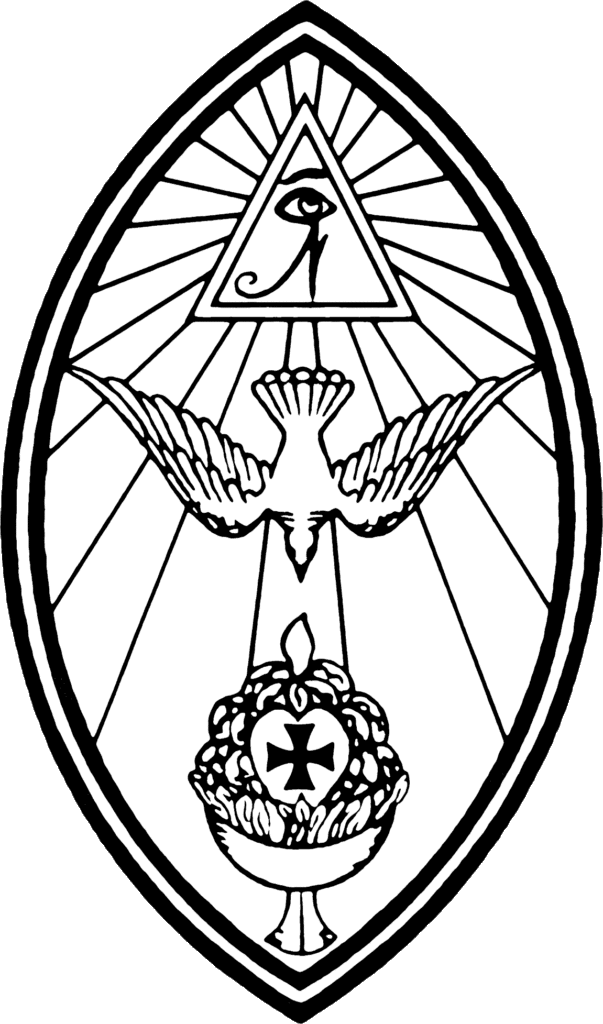NOTOCON IV Keynote Address: Initiation
Address delivered by National Grand Master General Sabazius X°
to the Fourth National Conference of the U.S. O.T.O. Grand Lodge
Saturday evening, August 9, 2003 e.v.
Brothers and Sisters,
Do what thou wilt shall be the whole of the Law.
A Hermit, a Lover and a Man of Earth were all fishing together in a boat out in the middle of a lake. The Hermit says, “There is thirst. I shall go ashore and bring us back somewhat to drink.”
So he climbs out of the boat, strides serenely across the surface of the lake to the concession stand on the shore, buys some cold, bottled spring water, strolls back across the lake, and calmly climbs back into the boat.
Some time later, the Lover says, “Brother, that water was indeed refreshing, but I thirst again. I’ll shall return.”
So he clambers out of the boat, sprints across the surface of the lake to the shore, selects a nice Merlot and three ample glasses, dances back across the lake, leaps back into the boat and pulls the cork.
Having witnessed these miracles, the Man of Earth thinks to himself, “This is truly incredible, but I believe I am ready to try this.” So, after they’ve finished off the Merlot, he announces, “Brethren, I could sure use a Margarita right about now, and you look like you could, too. It is my will to walk to the shore from this boat, as you have done, and get us a few, forthwith.”
Setting his face in an expression of grim resolve, he climbs deliberately up onto the gunwale of the boat and, his heart pounding, prepares to step out onto the surface of the lake.
“On the rocks!” shouts the Lover.
“You got it!” replies the Man of Earth with a confident smile, and immediately plunges into the lake with an enormous splash.
As the Hermit and the Lover haul the soaking Man of Earth back into the boat, the Lover, pointing down and a little off to the side, says, “No, you have to step on the rocks.”
Now, this little fable may seem somewhat more poignant to some of you than to others – but don’t worry, it’s just a matter of time. And time, is, of course, the medium in and by which initiation operates. Initiation is a dynamic interface between the past and the future.
The word ‘initiation’ signifies a beginning, a beginning of something new; but it also signifies an induction into some sort of system, whether that system be a particular spiritual, occupational, or academic discipline, or an institution of some sort, or even a stage of development. In any case, the initiate encounters transformation through the action of a pre-existent medium. The initiate chooses to set foot on a new path; but the path itself was already there in some form – what is new is the fact that this particular initiate is now walking on it. Initiation is the beginning of something new, and it is the conservation and renewal of something already established. “The more things change, the more they stay the same,” or so they say.
The verb ‘to initiate’ is transitive, it takes both a subject and an object. The candidate becomes an initiate through the action of an initiator, whether that initiator be another person, or a book, or a life-changing event, or a praeter-human intelligence. A receiver cannot be its own transmitter. You can’t teach yourself unless you have something to teach, and if you havesomething to teach, then you must already know it. The term ‘self-initiation,’ therefore, when taken in its strictest sense, involves a fundamental internal contradiction. There must be an initiator of some kind.
Since initiation is an ongoing process, human initiators typically operate within the context of an initiatory system. Now, some initiatory systems offer, in effect, a single initiation – the outsider graduates to insider-hood by a process of casting off the Old Falsehood in favor of the New Truth. This is the essence of the process of conversion – but an entirely newdimension unfolds when the same system offers multiple, additional initiations. Now the dualistic viewpoint of the convert is challenged with different perspectives; and what wasabsolute truth becomes an aspect of truth. If the initiate is up to this challenge, she may perceive a deeper significance of initiation; that the process of initiation itself represents a way of synergistically interacting with one’s changing environment in a dance of continual transformation, adaptation, and evolution.
It is not only the candidate who is transformed by initiation. Every initiator is transformed and matured by the experience of every initiation she performs. Being an initiator can, for those whose will is so inclined, be as important an aspect of the great work as being initiated – as you initiators out there can attest. Each time you perform an initiation, you gain practical experience, as well as insights about people, fraternity, culture, and Magick; sometimes significant insights – at minimum.
In fact, the system itself cannot fail to be transformed by every initiation performed under its aegis. Techniques are refined, teachings are more fully understood and developed, procedures are streamlined and adapted to increasingly diverse circumstances. Furthermore, the very character of the system itself suffers or enjoys an incremental change with every new candidate initiated. Now, this does not mean that every initiate is entitled to mold the Order to his particular liking; however, as the addition of a single colored thread to a tapestry can cause new patterns in color and texture to emerge; so every initiate is a potential contributor to the growth, development, and evolution of our Order.
Each initiate brings something to the table, and that something has been partially formed by the culture in which that initiate has lived. Our Order is, in some ways, representative of a particular subculture within human society; but in other ways, it is a microcosm. As a microcosm of society, changes that ripple through the idea-body of society at large also ripple through the microcosmic idea-body of our Order. One might view this as an ongoing process of initiation in which our Order itself is the Candidate. This applies not only to our doctrine of aeons, but also to the more gradual changes that occur from year to year.
For better or for worse, cultural attitudes do change over time, and these changing attitudes and priorities are necessarily reflected in the living body of our Order. It would be a mistaketo ignore these changes – to do so would ultimately render our Order little more than a museum of historical curiosities with neither relevance nor resources.
However, it would equally be a mistake for the Order to abandon its core principles, its identifying characteristics – its landmarks – in a futile, conformist bid for social approval. To do so would be to crown the lowest common denominator. Only insignificant banalities offend no-one.
Fundamental truths, great truths, initiatory truths never lose their relevance; but the ability to communicate them effectively depends a great deal on cultural context. This is especially true when, as is the case with so many great truths, it can only be honestly expressed in veiled form, via allegory and symbol. Sometimes new symbols come our way that can be useful to us. Sometimes traditional symbols can be rendered less useful when they are profaned, abused or otherwise become strongly associated with some negative or absurd idea or event. To take a rather extreme example, whatever meaning could be conveyed by the figure of a swastika prior to WWII must now contend with the powerful associations it acquired during that time. Symbols take on new meanings over time, and when placed in new cultural contexts; and this may require additional explanation or emphasis when the symbol is simply too valuable to be abandoned and replaced.
Sometimes we illustrate great initiatory truths by examples from science, the study of nature; but science is a discipline that always seeks to outdo itself, and is constantly changing. The popular, essentially unquestioned notions of one generation may be regarded as silly superstitions by the next. Many assumptions about race, genetics, sexuality and gender that were commonly held in the nineteenth and twentieth centuries have been either disproved by scientific discoveries, or have simply been discarded by virtue of widespread contrary experience. Great truths, however, remain true, and this is the way they can be distinguished from quaint, ephemeral notions.
As this continuing process of initiation leads our Order into the future, it may, from time to time, become necessary for us to re-evaluate some of our policies and customs. We may find the need to adjust our course as an organization: to avoid new pitfalls; to take advantage of new opportunities; and to integrate what we have learned through experience. As we adaptto our continually changing circumstances, it is important to continue to reflect on the core principles enshrined in our traditions and mysteries – those principles that are of perennialvalue and significance – to endeavor to identify them, to understand them, and to ensure that they remain conserved and duly guarded.
Because, if we continue with this idea that our Order itself is the candidate in an ongoing process of large-scale initiation, then we must remember that it is not only the candidate who is transformed by initiation. It is the will of our Order to be an active agent for change in society, and every initiate of our Order partakes of that will. We may work this Magick in many different ways, according to what we each bring to the table: through teaching, through publishing, through putting on local events and events like this, through engaging in community service, through political action, through art, through music, through satire, and of course, through that old-time ceremonial; but in all cases we do this by living our lives by our core principles – by integrating the Light of our initiations into our very beings, so that it shines out as an inspiration to our friends, our co-workers, and to everyone we meet. So shall we manifest the initiation of the World into Thelema.
Love is the law, love under will.

